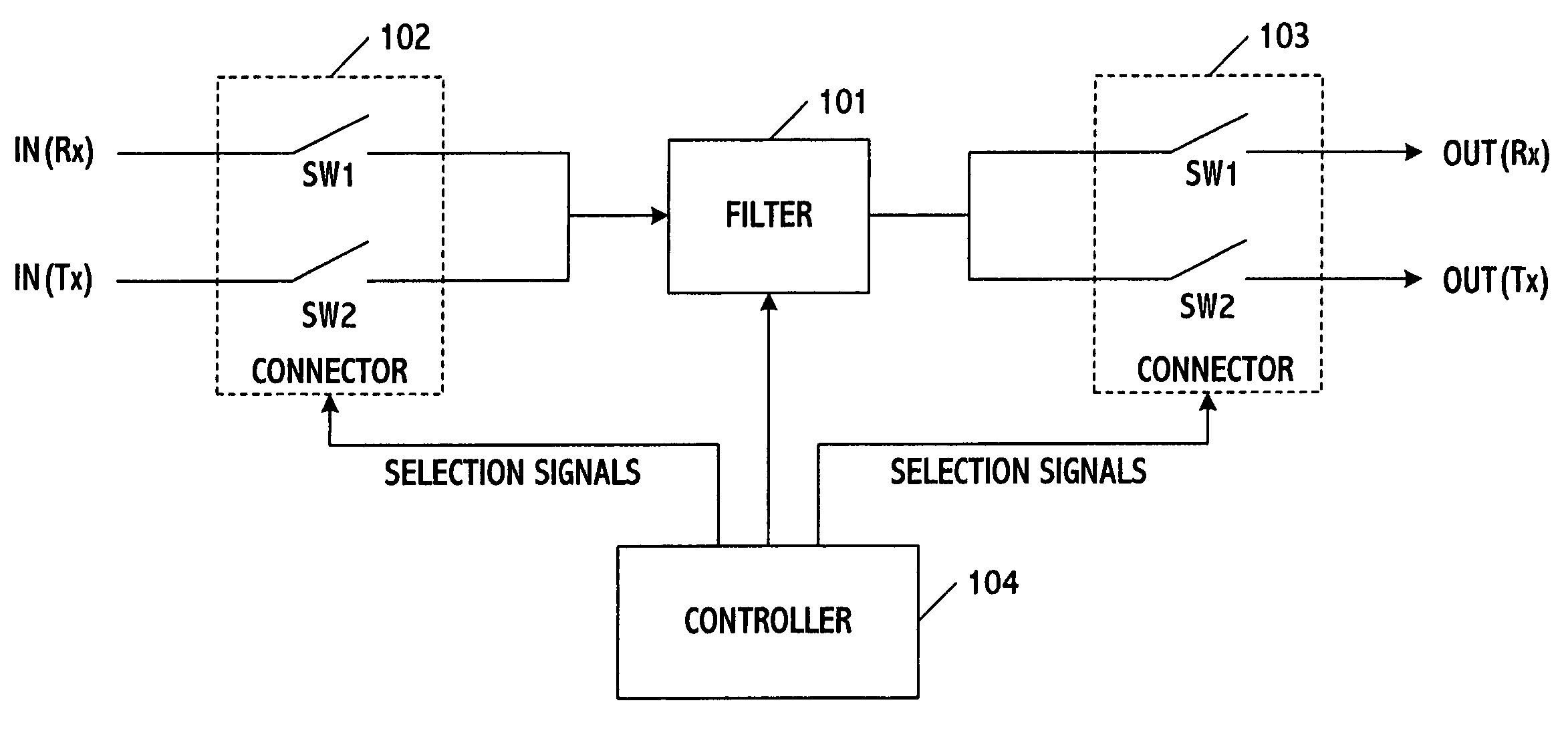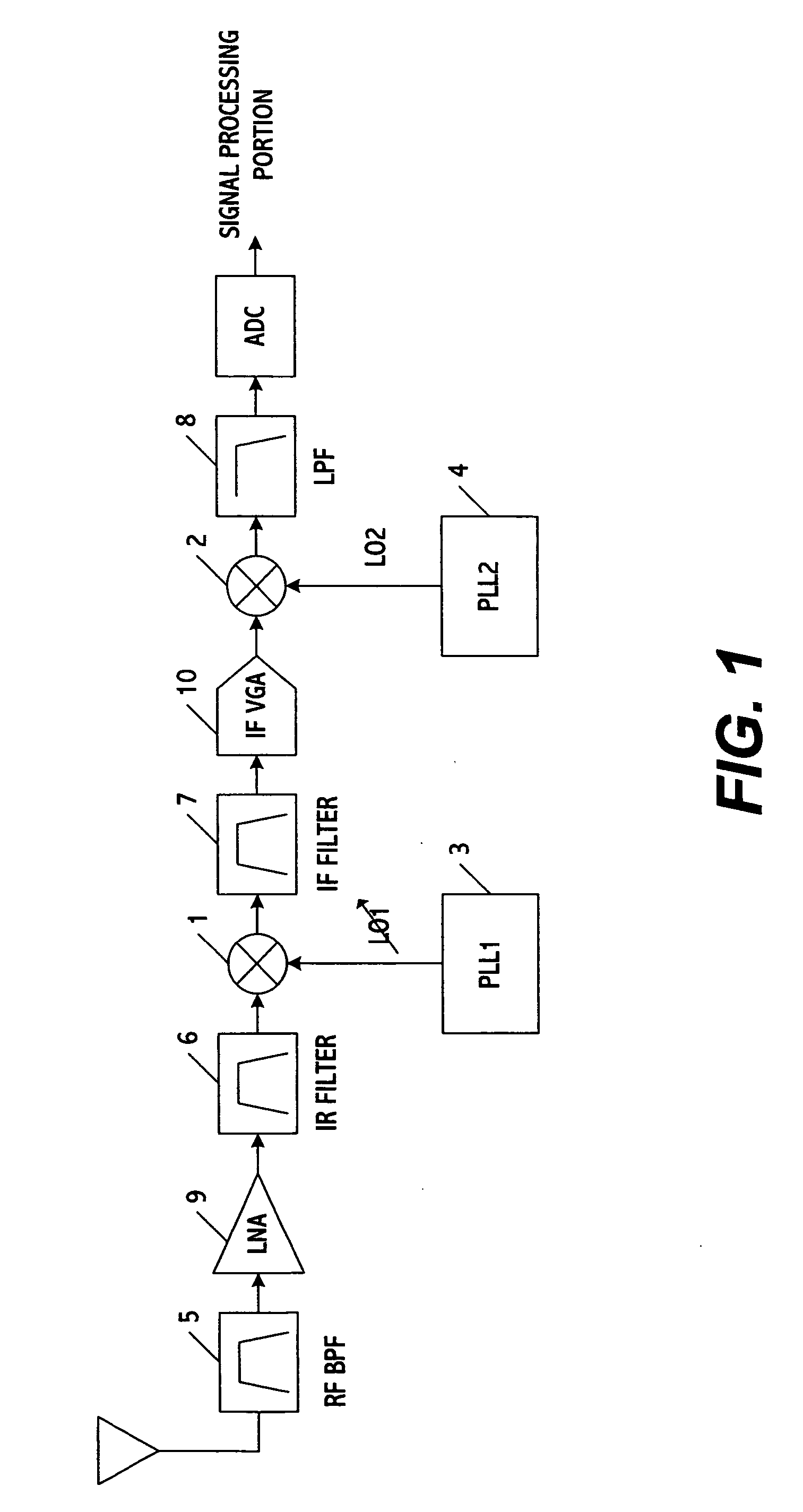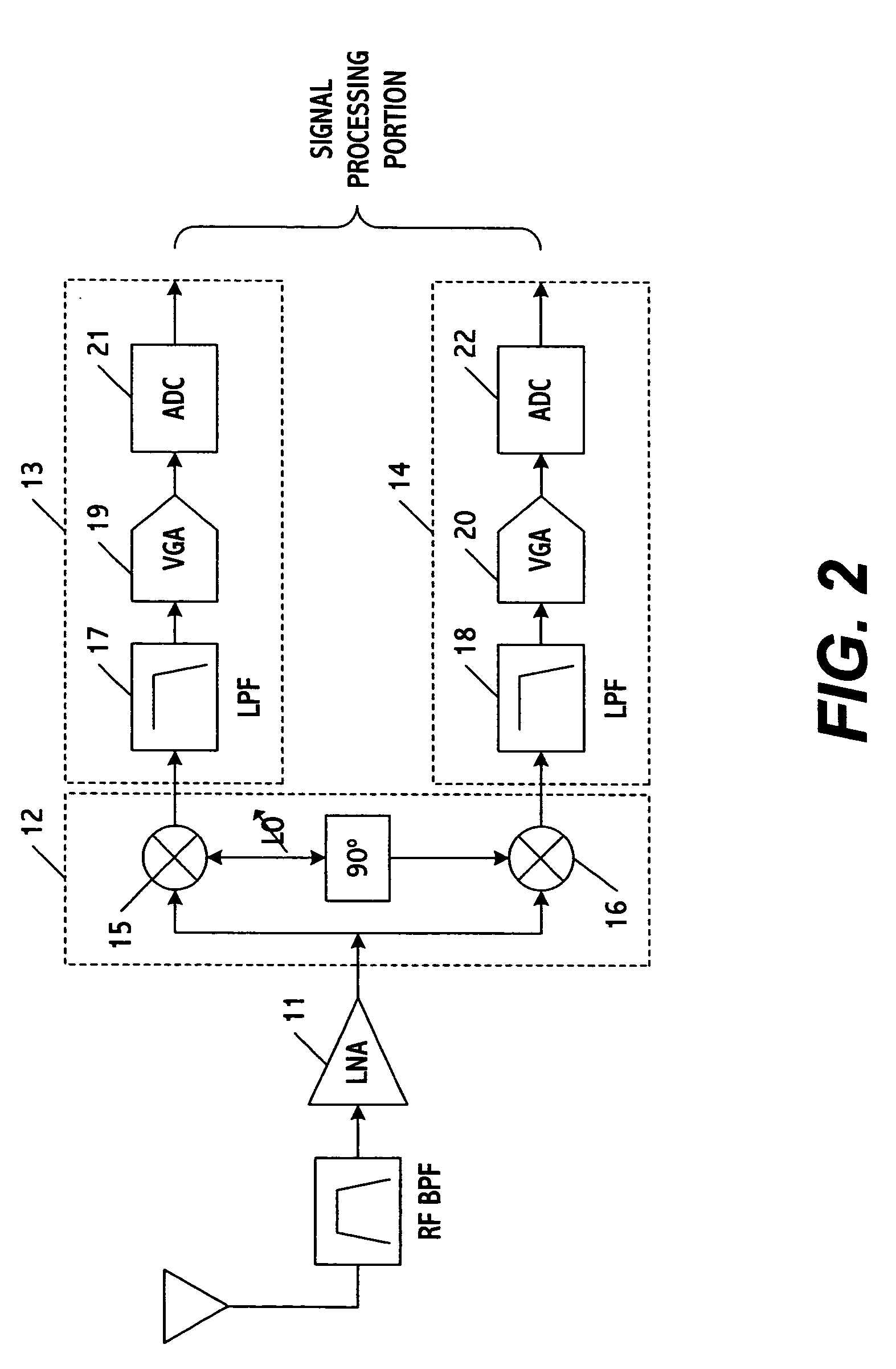System and method for filtering signals in a transceiver
- Summary
- Abstract
- Description
- Claims
- Application Information
AI Technical Summary
Benefits of technology
Problems solved by technology
Method used
Image
Examples
Embodiment Construction
[0039] The present invention is a system and method for filtering signals in a communications transceiver. Unlike other approaches, the system and method use one filter or at least a portion thereof to process signals along the transmitter and receiver paths of the transceiver. This results in a substantial increase in processing speed and efficiency, and simultaneously a reduction in the size and cost of the chip incorporating the transceiver because less hardware is being used. Also, in order to optimize performance the filter characteristics may be varied based on whether transmitter or receiver signals are being processed, however the same filter characteristics may be used for both types of signals if desired. Also, while the filter is ideally suited for use in the front-end and more specifically the baseband signal recovery portion of the transceiver, those skilled in the art can appreciate that other locations are possible including the signal processing portion or any other ...
PUM
 Login to View More
Login to View More Abstract
Description
Claims
Application Information
 Login to View More
Login to View More - R&D
- Intellectual Property
- Life Sciences
- Materials
- Tech Scout
- Unparalleled Data Quality
- Higher Quality Content
- 60% Fewer Hallucinations
Browse by: Latest US Patents, China's latest patents, Technical Efficacy Thesaurus, Application Domain, Technology Topic, Popular Technical Reports.
© 2025 PatSnap. All rights reserved.Legal|Privacy policy|Modern Slavery Act Transparency Statement|Sitemap|About US| Contact US: help@patsnap.com



